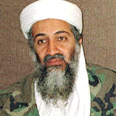
A real life 'Captain Nemo'
100 years after the death of SF author Jules Verne, his darkest fantasies have come true
TEL AVIV - Since 9/11, the world has been in a nightmarish battle with terrorist organizations. It seems that there is nothing they might not be willing to use, including biological, chemical, and perhaps even nuclear weapons, which have been until now exclusively owned by highly developed nations.
In truth, there is nothing new in this scenario; we have found it in popular literature for well over a century.
In 1870, French author Jules Verne (who is being celebrated this month, 100 years since his death) published his book, "Twenty Thousand Leagues Under the Sea." One of that book’s heroes was Captain Nemo. This hero was extraordinary and quite original in the context of the popular literature of that period.
Nemo was in fact a terrorist who used highly advanced technology, including a sophisticated submarine, to attack ships, and especially British ships.
Originally, Verne intended to explain Nemo’s origin as a nationalist Pole fighting the Russians, who had conquered his country. Under pressure from his publishers, who did not want to anger the Russians, these details were left out of the book, and Nemo’s motives for his attacks on shipping were left unclear.
Super-terrorists common in 20th century fiction
In a later book, "The Mysterious Island (1874), Verne explained that Nemo was a prince from India, a freedom fighter against the conquering British.
In this way a new figure appeared in literature: a man from a country considered backward politically and scientifically, who uses astounding technological methods to fight the conquerors of his country, creating what we would call continuous terror.
Later on, Verne created a parallel character, the scientist Robur, who, using his flying machine (essentially a helicopter), carries out bloody worldwide terrorist attacks.
In the book, "Master of the World" (1904), Robur does not act from political motives, but simply from megalomania. Here again Verne showed how technological methods, in the hands of a single man, or a small group, can threaten the greatest world powers.
The idea of terrorists using the most highly developed technology to threaten the world became a common subject in adventure tales and science fiction in the early decades of the 20th century, almost a cliche, in fact.
Every hero worth his salt in popular literature fought against enemies of this type.
Lone terrorists faded in Cold War years
However, after World War II, in the '40s and '50s, the world moved to a conflict between two superpowers, the U.S. and the U.S.S.R. The idea that an individual or small group that did not work for one of the two great superpowers (or China), could threaten the world, seemed absurd.
The lone terrorist controlling super-weapons vanished completely from serious science fiction, although such terrorists did continue to appear in sensationalist spy stories such as James Bond, and its imitators.
In such spy stories they appeared as international crime organizations using the most advanced technology for their nefarious crime activities, or even for the purpose of conquering the world, but not for the purpose of aiding one of the superpowers.
However, spy literature was taken over by realistic, “serious,” authors, such as John LeCarre, who described the world of spies as a battle between gray agents of the superpowers. There were no more perfect heroic and sexy heroes, fighting against crafty but insane arch-criminals. Thus, here too, the super-terrorists with their crime organizations disappeared from the novels.
The super-terrorists continued to appear from time to time in the Bond movies and in comics. Only in such extravagant and unrealistic fantasies was it possible in the '80s and '90s to find insane billionaires threatening world peace with their astounding technological devices.
Here we had stories of international crime and terror organizations so well organized that if you cut off one head, 10 new heads would grow in its place, and continue to threaten the peace of the whole world (for example, the “Hydra” organization of the well-known comics series about secret agent “Nick Perry”).
Bin Laden our real-life Nemo
In recent years things that were thought in the past to be crazy fantasies suitable only to comic books have turned into horrifying reality. Today there are international crime syndicates whose abilities match those of many countries, using the most advanced technologies such as were described in the Bond novels.
These organizations are loyal only to themselves. Two examples: drug cartels, and the Russian mafia.
And there are also organizations whose ideology requires them to achieve world domination for a certain set of beliefs, such as Osama bin Laden's al Qaeda.
Bin Laden, the billionaire terrorist who has advanced technologies, including perhaps even biological and nuclear weapons at his command, reminds us of Captain Nemo, who was also a Third World character who went out to fight Western powers using advanced versions of their own weapons.
Here, sadly, we have another example of something once thought of as a childish and fanciful imaginative tale, turning into reality.











